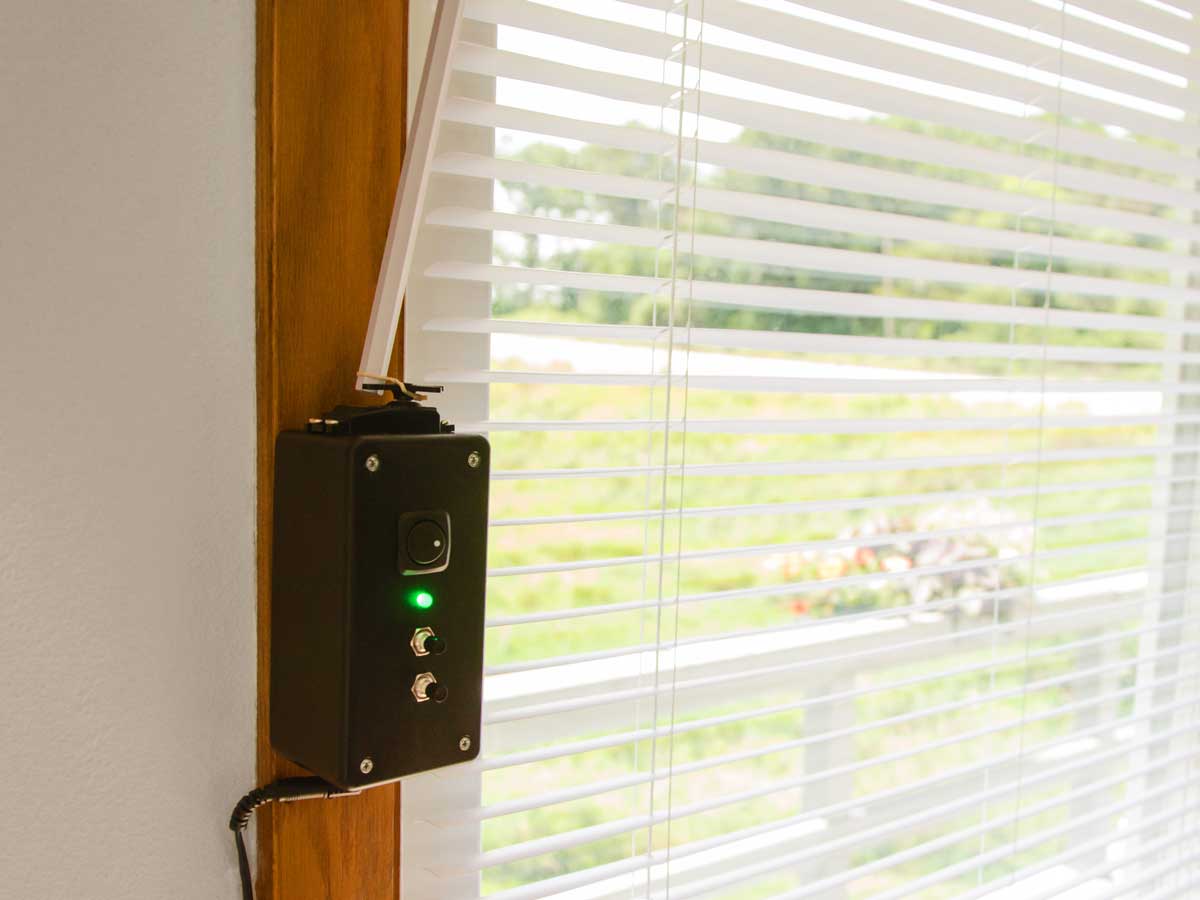
Sometimes the sun is my friend, warming the house on cool days. Other times it’s my enemy, warming the house on hot days. Blinds are one solution to this problem, but it seems that no matter how I set my blinds before I leave for the day, the weather changes and I come home to a sweltering or freezing house.
So I built this mini blind minder to open and close them automatically. It’s powered by an Arduino microcontroller, which uses a temperature sensor to read the room temperature and then activates a servomotor to open the slats when it’s too cool and close them when it’s too warm. It has an adjustable thermostat and it can also be operated manually to open or close your blinds with a push of a button.
You’ll solder a custom Arduino “shield” — a circuit board with headers that plug into the Arduino — and then mount it all in a tidy RadioShack project case. This project requires only a moderate amount of soldering, so you can easily build it in a day or a weekend.




